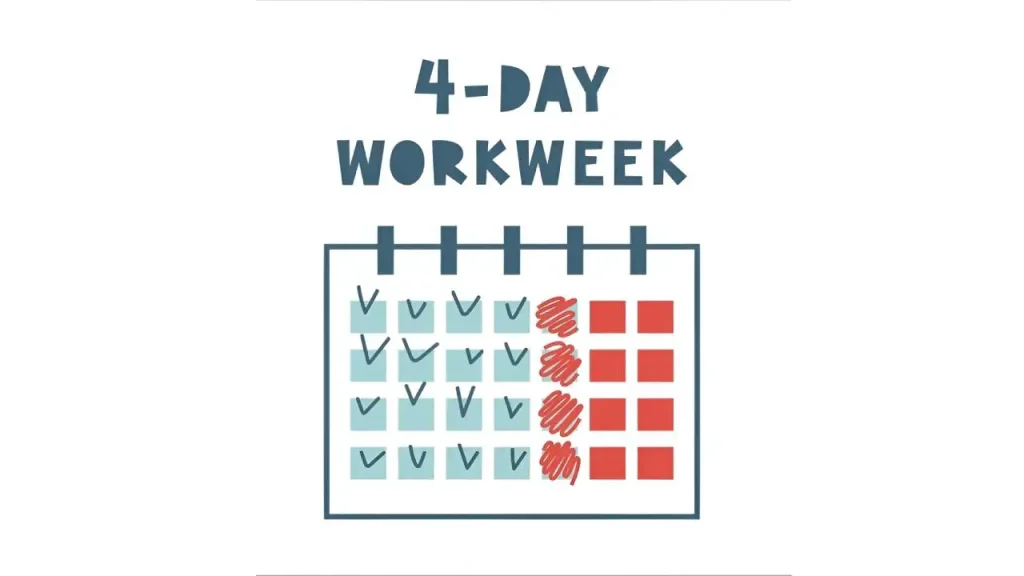Is a 4 On 3 Off Shift Schedule Right for Your Business?
Table of Contents
- What Is a 4 On 3 Off Shift Schedule?
- Pros of a 4 On 3 Off Shift Schedule
- Improved Work-Life Balance for Employees
- Increased Productivity and Job Satisfaction
- Potential Cost Savings
- Cons of a 4 On 3 Off Shift Schedule
- Increased Fatigue from Longer Shifts
- Complex Scheduling and Potential Coverage Gaps
- Not Suitable for Every Business
- How to Decide If a 4 On 3 Off Schedule Fits Your Business
- Industry Standards and Competitor Practices
- Employee Preferences
- Cost vs. Benefit Analysis
- Trial Period
- Final Thoughts
- FAQs
As businesses continue to explore alternative work schedules, the 4 On 3 Off shift schedule has gained popularity for its potential to boost productivity while improving employee satisfaction. This schedule, where employees work four consecutive days and get three days off, offers a compressed workweek that promises multiple benefits. But is it the right choice for your business?
In this article, we’ll explore the pros and cons of a 4 On 3 Off shift schedule and provide valuable insights to help you determine if it fits with your operational needs.
What Is a 4 On 3 Off Shift Schedule?

A 4 On 3 Off shift schedule is a compressed workweek model in which employees work four consecutive days followed by three consecutive days off. This setup offers businesses the opportunity to ensure continuous operation while giving employees more time for rest and personal activities.
Industries like manufacturing, healthcare, customer service, and retail often implement this model because it allows for longer workdays, which reduces the number of workdays per week and provides employees with extended time off.
While this schedule has clear advantages, it may not be suitable for every business, depending on the nature of your work and the requirements of your employees.
Thinking of writing a business plan?
Hire our professional business plan writers now!Pros of a 4 On 3 Off Shift Schedule
Improved Work-Life Balance for Employees
The biggest advantage of the 4 On 3 Off schedule is the improved work-life balance it offers employees. With three consecutive days off, workers can enjoy longer rest periods, reducing stress and burnout. They have more time for family, personal interests, or travel, which helps improve their overall well-being.
In addition, fewer commuting days mean less time spent traveling, which can result in lower transportation costs and a more balanced lifestyle for employees.
Increased Productivity and Job Satisfaction
Employees who work longer shifts (10-hour days) typically experience less daily fatigue and are more focused on the task at hand. Knowing that they have several days off ahead, employees can maintain better concentration and output during their shifts. This boost in productivity can benefit businesses by improving efficiency without overwhelming workers.
Moreover, offering a flexible and predictable schedule like this one can help businesses attract and retain top talent, especially in competitive industries. A 4 On 3 Off schedule is often seen as a desirable perk that can lead to higher employee morale and job satisfaction.
Potential Cost Savings
For businesses, one of the hidden benefits of a 4 On 3 Off shift schedule is cost savings. Fewer operational days can lead to reduced facility expenses such as lower energy bills, less equipment wear, and even savings on supplies.
Additionally, companies may see lower turnover rates and fewer sick days, which can significantly reduce hiring and training costs. By better managing shift coverage and minimizing overtime, businesses can also cut back on unnecessary labor costs.
Cons of a 4 On 3 Off Shift Schedule
Increased Fatigue from Longer Shifts
While having three days off is appealing, working longer shifts of 10 hours can be tiring, especially in physically demanding jobs. Employee fatigue can lead to mistakes, accidents, or lower work quality, particularly in high-risk industries such as healthcare, manufacturing, or security.
In these cases, employers need to carefully consider whether employees can sustain such long hours without sacrificing their health or performance.
Complex Scheduling and Potential Coverage Gaps
Scheduling employees for this type of shift requires careful planning. Businesses must ensure they have enough staff to cover all shifts without creating gaps in service or operations. Using an employee scheduling app can help streamline this process, allowing for more efficient shift management and reducing the risk of coverage gaps.
In sectors that require round-the-clock service or customer interaction, it may be necessary to hire additional staff or offer backup options, which could add to operational costs. If not well managed, scheduling challenges could lead to increased overtime pay or inconsistent service delivery.
Not Suitable for Every Business
While the 4 On 3 Off schedule works well in certain industries, it may not be ideal for businesses that require daily customer interaction or have a more traditional 9-5 work model. For example, restaurants, retail stores, or businesses that rely on frequent customer touchpoints may find it difficult to maintain consistent staffing levels with this type of schedule.
In such cases, businesses might face challenges in workload distribution, which could lead to employee dissatisfaction or burnout if the workload isn’t evenly shared.
How to Decide If a 4 On 3 Off Schedule Fits Your Business

Before committing to a 4 On 3 Off schedule, businesses should assess several key factors:
Industry Standards and Competitor Practices
Look at other businesses in your industry. Do competitors offer this kind of schedule? Is it common in your field? Understanding industry trends and seeing how other businesses are benefiting (or struggling) with similar schedules can help guide your decision.
Employee Preferences
Survey your employees to gauge their interest in the 4 On 3 Off schedule. Would they prefer longer work days for more time off? Employees who value flexibility might be more inclined to adopt this schedule, but it’s essential to get their input before making changes.
Cost vs. Benefit Analysis
Consider the financial implications of this schedule. Will it reduce operational costs, improve employee retention, or boost productivity? Or will you face higher costs due to scheduling complexities or the need to hire additional staff? Weighing the pros and cons will help determine whether this schedule aligns with your business goals.
Trial Period
If you’re unsure whether the 4 On 3 Off schedule is the right fit, consider running a trial period with a small group of employees. Track productivity, employee satisfaction, and operational efficiency during this period to see if the model is successful before implementing it across your entire business.
Looking for a solid growth plan?
Check out free business plan examples now!Final Thoughts
The 4 On 3 Off shift schedule can improve employee satisfaction, boost productivity, and reduce operational costs by offering better work-life balance and longer rest periods. However, its success depends on the industry, business needs, and the ability to manage scheduling effectively.
Before adopting this model, businesses should consider employee preferences, industry trends, and the financial impact. A trial period can help assess its suitability. While beneficial for some sectors, the 4 On 3 Off schedule may not be ideal for all businesses, so careful evaluation is essential.
FAQs
What is the 4 On 3 Off Shift Schedule?
The 4 On 3 Off shift schedule is a compressed workweek model where employees work four consecutive days followed by three days off, improving work-life balance and productivity.
How does the 4 On 3 Off Shift Schedule improve productivity?
This schedule helps employees stay focused during longer shifts, knowing they will have multiple days off to rest. It can lead to better performance and efficiency during workdays.
What industries benefit from the 4 On 3 Off Shift Schedule?
Industries like manufacturing, healthcare, customer service, and retail can benefit from the 4 On 3 Off shift schedule, as it provides extended time off while ensuring continuous operations.
Can the 4 On 3 Off Shift Schedule lead to employee burnout?
While it provides more time off, longer shifts of 10 hours or more can lead to fatigue, especially in physically demanding jobs. Employers should evaluate whether employees can sustain this schedule effectively.
What are the challenges of implementing the 4 On 3 Off Shift Schedule?
Some challenges include scheduling complexities, potential coverage gaps, and the need for additional staff in certain sectors. These factors need careful planning to avoid operational issues.













